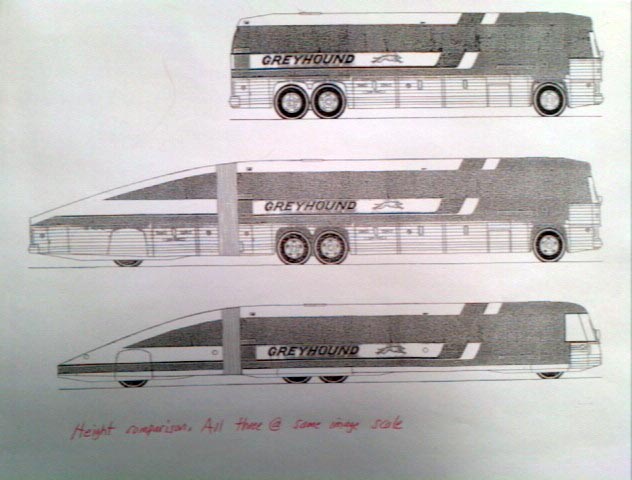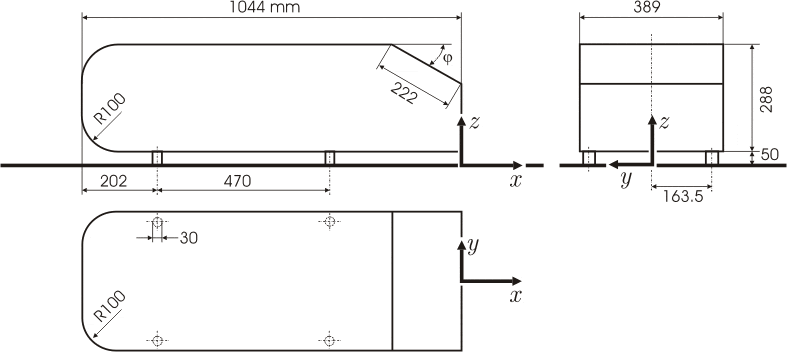Quote:
Originally Posted by sregord

Ah... wheels on the ground.
So an extended (Mair 1.9 diameter) boattail should be a trailer...a la
 
If it only starts the flow in the right direction (<3-4')..a la Ahmed
 |
* His ' cylinder-to- constant 22-degree down-slope angle' transition region constituted 98.7% of the torpedo's diameter. It's not the most efficient, although way better than PGA regulation golf balls.
* The Ahmed body has zero transition, and can't do any better than Cd 0.2298, with a 9-degree down-slope, compared to Cd 0.25 'naked.'
* If you throw in P. W. Bearman's 10-degree plan-view side angles, 10-degree diffuser, and upper edge chamfering, it implies perhaps a drag minimum on the order of Cd 0.166.
* the 1995, GM 'OPTIMUM' boat-tail, with 20-degree 'top', 10-degree 'sides', 10-degree diffuser, and 7% body height-radii ( all-around ), generated an 18-wheeler on the order of Cd 0.2261, down from from Cd 0.66 ( real wheels, not 'pylons' ).